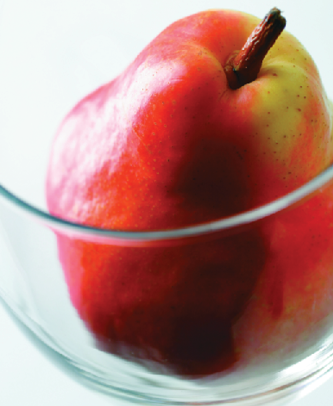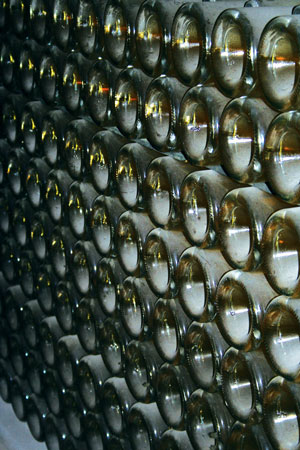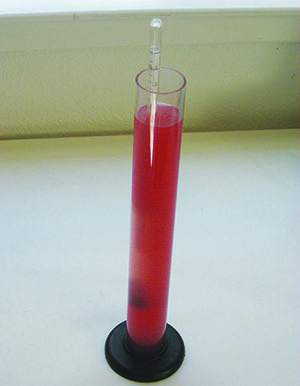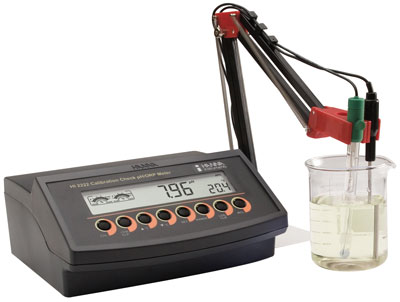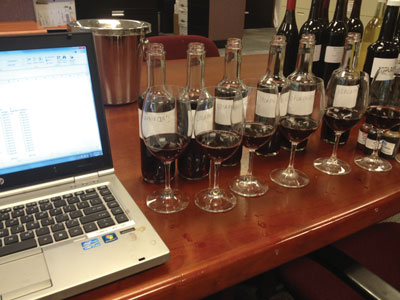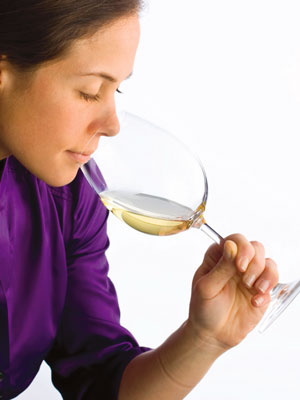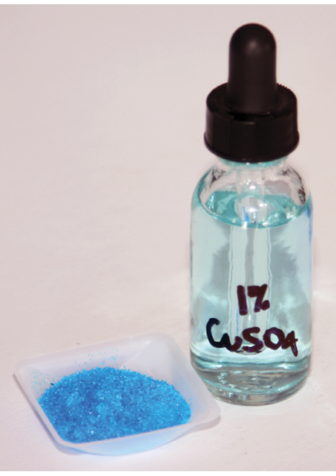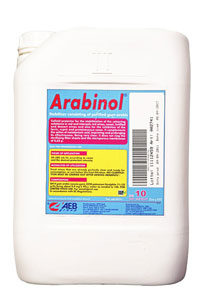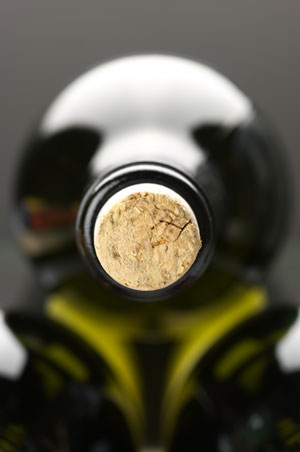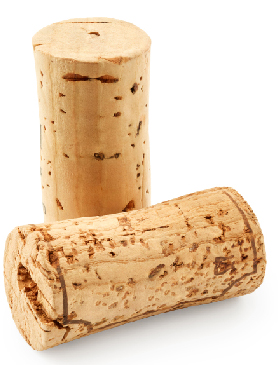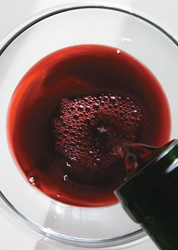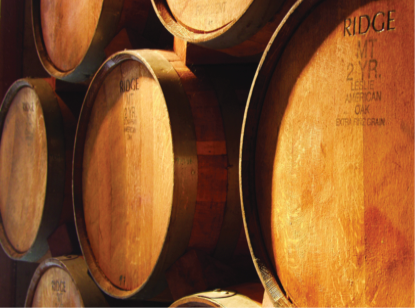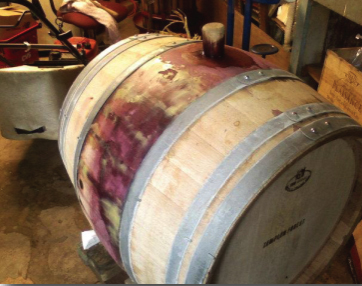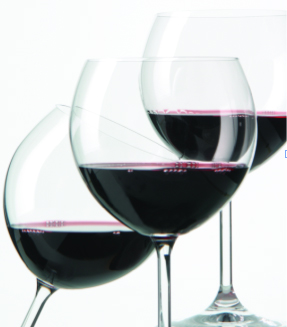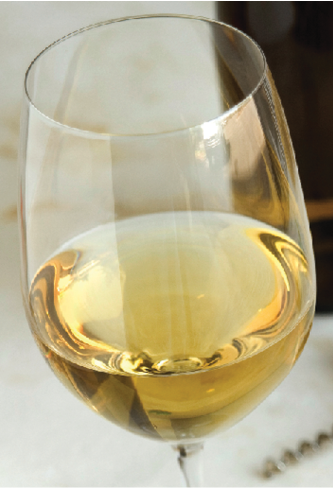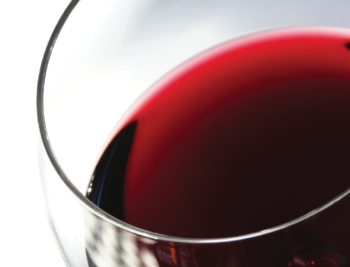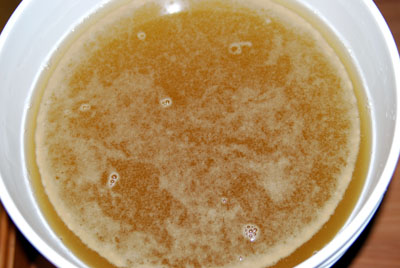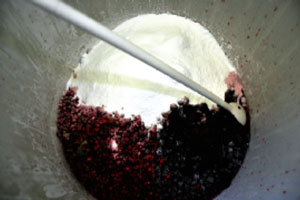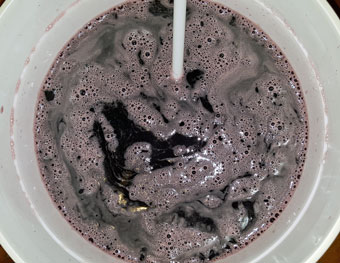Topic: Wine-Wizard
Flat & Sweet: Wine Wizard
, QMy pear wine is watery and flat, I have already bottled it. Is there anyway to save it? It was my first attempt at winemaking and I don’t know what went
Determining Ageability, Wine Chemistry, Decanting Advice, and Knocking Down Rot
QI’ve got a red Bordeaux-style blend with the following stats: Aged 28 months in French and American oak, with these numbers: Alcohol — 13.8%; Free SO2 — 37 mg/L; Total SO2 —
Screw Caps and Fruit Wines: Wine Wizard
Cap recycling QCan I reuse bottles with screw on caps for bottling wine? Jim Neumeistervia email AWhat you describe, reusing commercial screwcap wine bottles for subsequent bottlings, is something no commercial winery
Alternative Sweeteners, Pomace Compost, and Stuck Fermentations: Wine Wizard
QI grow and make Cabernet Sauvignon and Merlot in southwest Idaho. The season is intense but short. In order to reach decent ripeness (~25 °Brix), I have been growing with a very
Chardonnay Choices, Fruit Wines: Wine Wizard
I have 7 gallons (26 L) of 2009 Chardonnay made from home-grown grapes. This was my first year of production from these vines and I did not use oak or MLF. Fermentation
Testing options for pH and TA, Yeast choice for a fruit wine: Wine Wizard
Barrel tests QCan you tell me what I really need to handle one to one and a half barrels of juice annually? The TA and pH kits that I have seen are
Grape requirements, bentonite and yellow ring: Wine Wizard
QHow many pounds of grapes will make five gallons (19 L) of wine? Are there guidelines for reds and whites and varieties within each of those groups? How much does vintage affect
Sugar Conversion Tables, Making Wine from Sugar Cane: Wine Wizard
Sugar solution I am fairly new to home winemaking having only made a few kits and three batches of Muscadine wine. I have been using Daniel Pambianchi’s book Techniques in Home Winemaking
Softening The Wine, Using Gum Arabic, and Avoiding a Persistent Sediment
QI am planning to try a new product on some older cabernet wine (2015 vintage) that has not yet been bottled. It has a harshness that might be related to tannins. It
Reconfiguring the Palate & Properly Adding Acid to a Barrel
The Wizard explores the many sensations that tasters experience as a wine goes from grapes, through fermentation, and into the early stages of aging; in order to be a better judge of a wine’s character when finished. Also, a reader has a question about properly adding acid to a barrel.
Copper Sulfate Solutions: Wine Wizard
Q How do I get copper sulfate in accurate diluted food grade form? I would like to treat 5 gallons (19 L) of stinky fruit wine to get rid of the rotten
Gum Arabic, Chilled Reds, and Pinot Noir Advice
A reader wonders about the usefulness of gum arabic in their winemaking process. The Wiz also talks about chilled red wines, the ups and downs of Pinot Noir, and increasing mouthfeel in your wines.
Cork Variability, MLF Question, pH Testing, and Aceto Problems
A concerned reader asks the Wizard why commercially-purchased wines might have their corks raised. She also answers questions on metabisulfite use before malolactic fermentation, when to re-test for pH, and dealing with Acetobacter issues.
The Sulfite Blues, Curing A Stuck Fermentation and Freezing Grapes
Q I have a Merlot to which I added SO2 thirteen days ago and it smelled ok. but last night I pulled a sample and it had a bruised apple smell and
Preventing Oxidation, Excess Sulfite
I need help to prevent oxidation. I make about 40 gallons (151 L) from California grapes each year, usually finishing quite nice, but last year’s Sangiovese suffers from oxidation. After fermentation and
Sparkling Wine & Blackberry Wine: Wine Wizard
Dear Wine Wizard, I am in the process of vinting a Champagne, and after having read of a couple of different ways to create the “sparkling” effect, I am now thoroughly confused.
Evaporation Clarification, “Big” Reds, and Mold Malady
Remember, every time you open your barrel, you introduce air and potentially some undesirable spoilage organisms.
Broken Barrels, pH Adjustments, and “Chocolate” Wine
Oak barrels (and barrels made of other woods, sometimes acacia wood or even cherry wood) are really structurally amazing.
Avoiding Sulfites, Adding Copper
Pasteurization operates on a sliding scale and its effectiveness depends on a coefficient between time and temperature.
Lysozyme, Adding Sugar, and Oak Alternatives
Excluding bacteria that can eat malic acid and turn it into lactic acid is the only way to make sure you don’t get refermentation in the bottle.
Late Malolactic, Wine Kit Ingredients, and Color Questions
Your Zinfandel probably had a good reason (in the wine’s opinion, anyway) why it didn’t go through ML fermentation.
Overspiced Situation, Fining Reds, Brown Whites
Spices and other added flavorings in home winemaking are one of the trickiest things to get right.
Fining Fruit Wines, Sourcing Grapes, and Cleaning Agents
Wine clarifiers, or ‘fining agents’ as they (and a whole host of other wine-finishing additives) are called, are creatures of degrees.
Soapy Taste, Wine Pumps, and Testing Sulfite
I suspect you’ve got a fatty acid issue caused by your stuck/sluggish fermentation. S. cerevisiae can emit fatty acids when under fermentive stress . . .
Perfecting Pyment, Vinifera Vines, and Over-Yeasting
. . . you could also buy some powdered grape tannin, use oak chips, or even use a cup of strong black tea to add some tannin backbone to the wine if it’d be tough for you to obtain grape skins.
